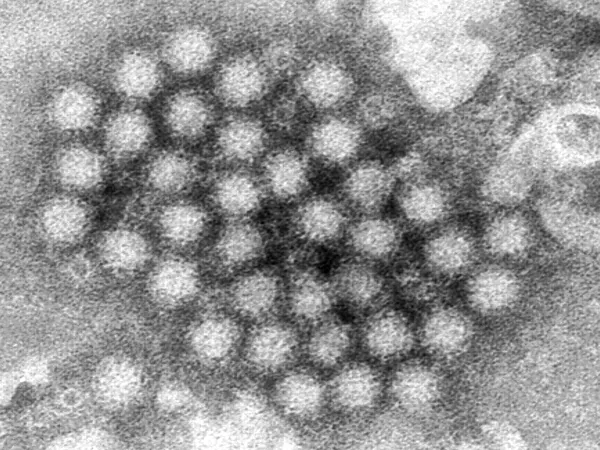
Norovirus Cases Skyrocket in the US: Essential Facts You Need to Know!
2024-12-31
Author: Benjamin
Norovirus infections are surging across the United States this winter, with alarming implications for public health. Dubbed the "winter vomiting bug," this highly contagious virus spreads easily through contaminated surfaces, foods, water, and contact with infected individuals.
What You Should Know About Norovirus
Norovirus is responsible for an astounding 58% of foodborne illnesses in the US, often referred to as the Norwalk virus after the first strain identified in Norwalk, Ohio, in the 1970s. This virus belongs to the Caliciviridae family of small RNA viruses, which can infect a variety of hosts, including humans and some animals.
Peak Season for Norovirus
The virus typically strikes hardest from November to April, a period known as "norovirus season." This is when communities often see significant outbreaks, particularly in close quarters.
How Does Norovirus Spread?
Highly contagious, norovirus is transmitted through several routes:
1. **Direct Contact**: Touching surfaces contaminated with the virus or interacting with infected individuals.
2. **Consumption**: Eating contaminated food or drinking tainted water, including ice.
3. **Aerosolized Particles**: An infected person vomiting can send virus-laden droplets into the air, which can be inhaled.
Norovirus thrives in confined spaces such as schools, nursing homes, and cruise ships, where close contact is commonplace. In December alone, three separate outbreaks aboard cruise ships in Hawaii and the Caribbean impacted 301 passengers, marking an unprecedented month for such incidents.
Are Oysters a Major Risk?
Yes, raw or undercooked shellfish, especially oysters, are known carriers of norovirus. Oysters filter-feed, making them susceptible to picking up contaminants—small viral particles from polluted waters can lead to illness in humans.
The US Food and Drug Administration (FDA) has recently warned against consuming oysters harvested from particular regions in British Columbia due to contamination risks. In past years, outbreaks linked to oysters have been reported across multiple states, illustrating the ongoing need for vigilance when consuming seafood.
Current Outbreak Scale and New Strains
This winter, the surge in norovirus cases has been striking. Recent CDC data reveals a jump from 69 outbreaks in the last week of November to 91 in the first week of December. This marks a stark increase compared to previous years. Minnesota health officials reported 40 cases—double the expected amount for December.
A new strain, GII.17, has become the dominant type this season, contributing to the outbreak’s intensity. With lower population immunity to this strain compared to its predecessor, GII.4 Sydney, health experts warn that this December could see an even bigger wave of infections than usual.
Recognizing Symptoms of Norovirus
Symptoms typically manifest within 12 to 24 hours after exposure, sometimes as quickly as 10 hours. Common symptoms include:
- Sudden and severe vomiting
- Watery diarrhea
- Abdominal cramps
- Nausea
- Low-grade fever
Most infections will resolve within 24 to 36 hours, but dehydration remains a serious concern, especially for vulnerable populations like young children and the elderly.
Treatment Approaches
Currently, there is no specific medication for norovirus. Management focuses on alleviating symptoms and preventing dehydration. Staying hydrated is crucial; therefore, it's recommended to drink plenty of fluids—oral rehydration solutions are particularly effective. Avoiding caffeinated drinks and alcohol is wise, as they can exacerbate dehydration.
In severe cases of dehydration, medical treatment may involve intravenous fluids. Over-the-counter medications may help manage diarrhea, but consult a healthcare provider for guidance.
Preventing Norovirus Infections: Best Practices
To stay safe and minimize your risk of infection, the CDC recommends several key practices:
- Wash hands thoroughly with soap and water, especially after using the restroom and before handling food.
- Clean and disinfect surfaces regularly, particularly in kitchens and bathrooms.
- If you’re ill, stay home to prevent spreading the virus to others.
With the current surge in norovirus cases throughout the US, public vigilance is more critical than ever. Stay informed and proactive to guard against this highly contagious virus that can disrupt daily life.



 Brasil (PT)
Brasil (PT)
 Canada (EN)
Canada (EN)
 Chile (ES)
Chile (ES)
 Česko (CS)
Česko (CS)
 대한민국 (KO)
대한민국 (KO)
 España (ES)
España (ES)
 France (FR)
France (FR)
 Hong Kong (EN)
Hong Kong (EN)
 Italia (IT)
Italia (IT)
 日本 (JA)
日本 (JA)
 Magyarország (HU)
Magyarország (HU)
 Norge (NO)
Norge (NO)
 Polska (PL)
Polska (PL)
 Schweiz (DE)
Schweiz (DE)
 Singapore (EN)
Singapore (EN)
 Sverige (SV)
Sverige (SV)
 Suomi (FI)
Suomi (FI)
 Türkiye (TR)
Türkiye (TR)
 الإمارات العربية المتحدة (AR)
الإمارات العربية المتحدة (AR)